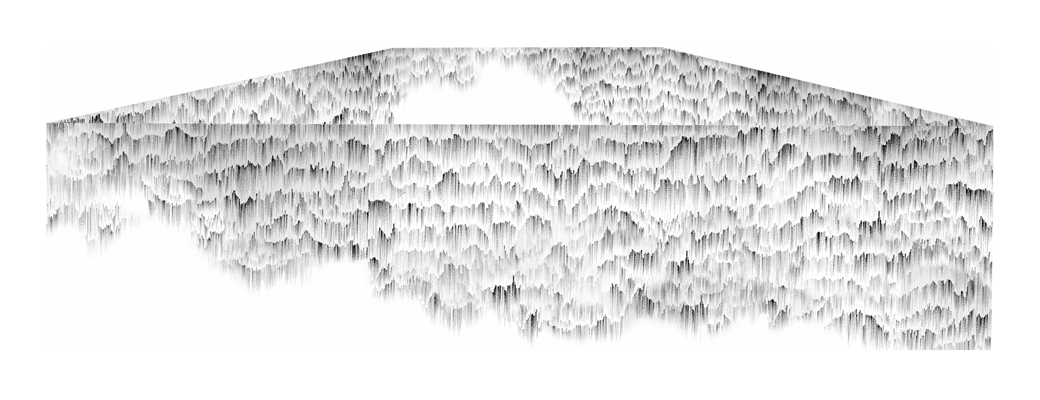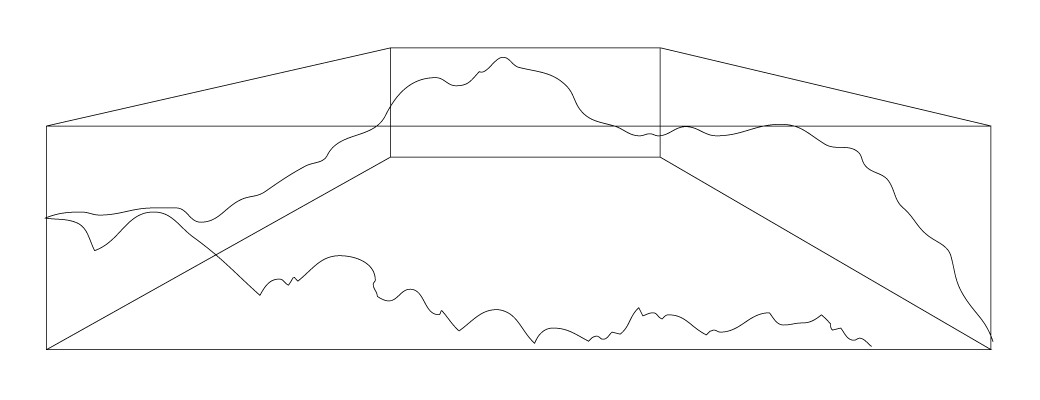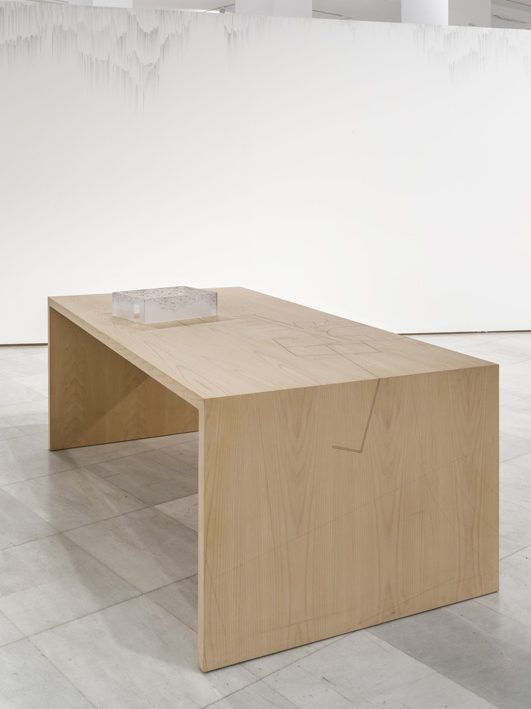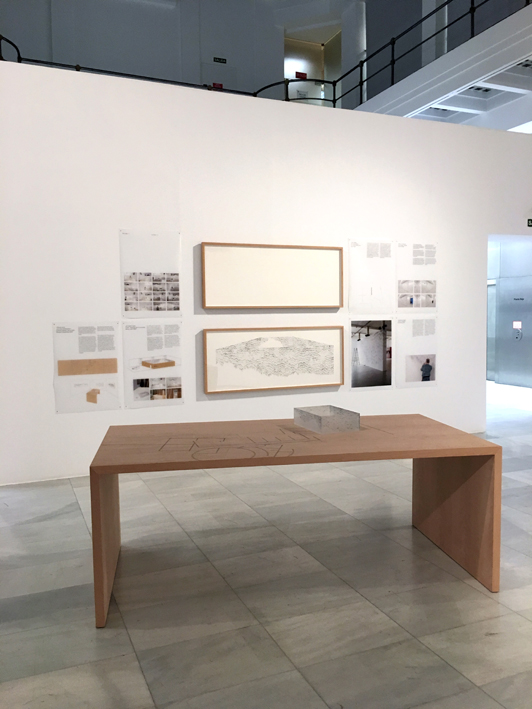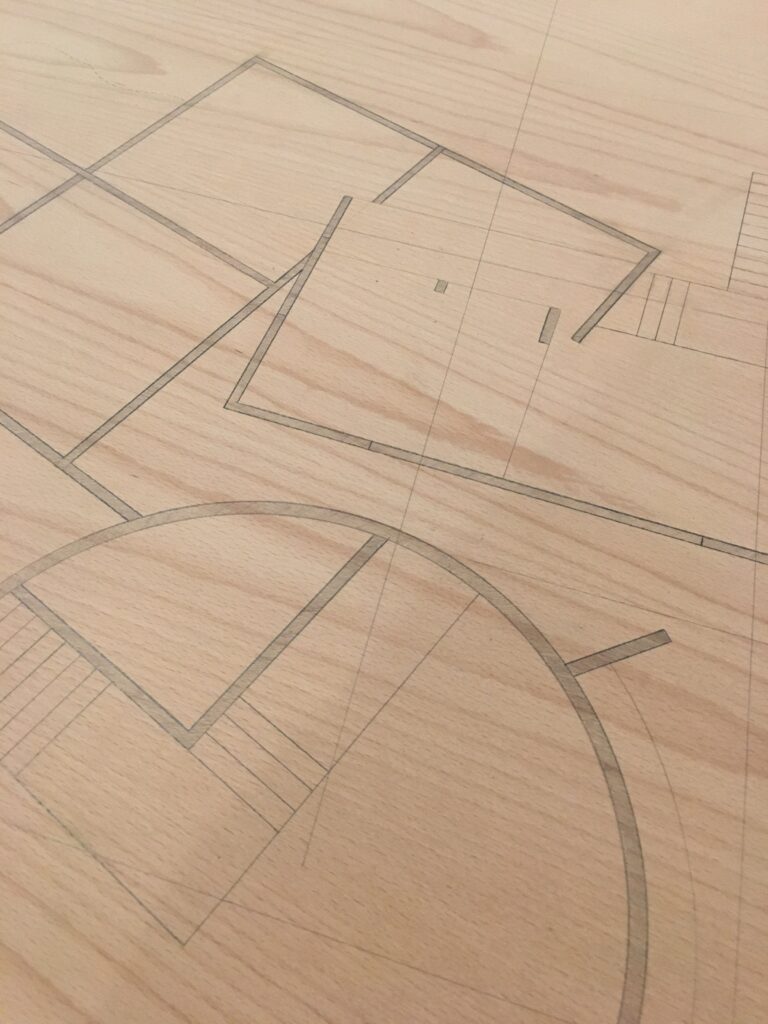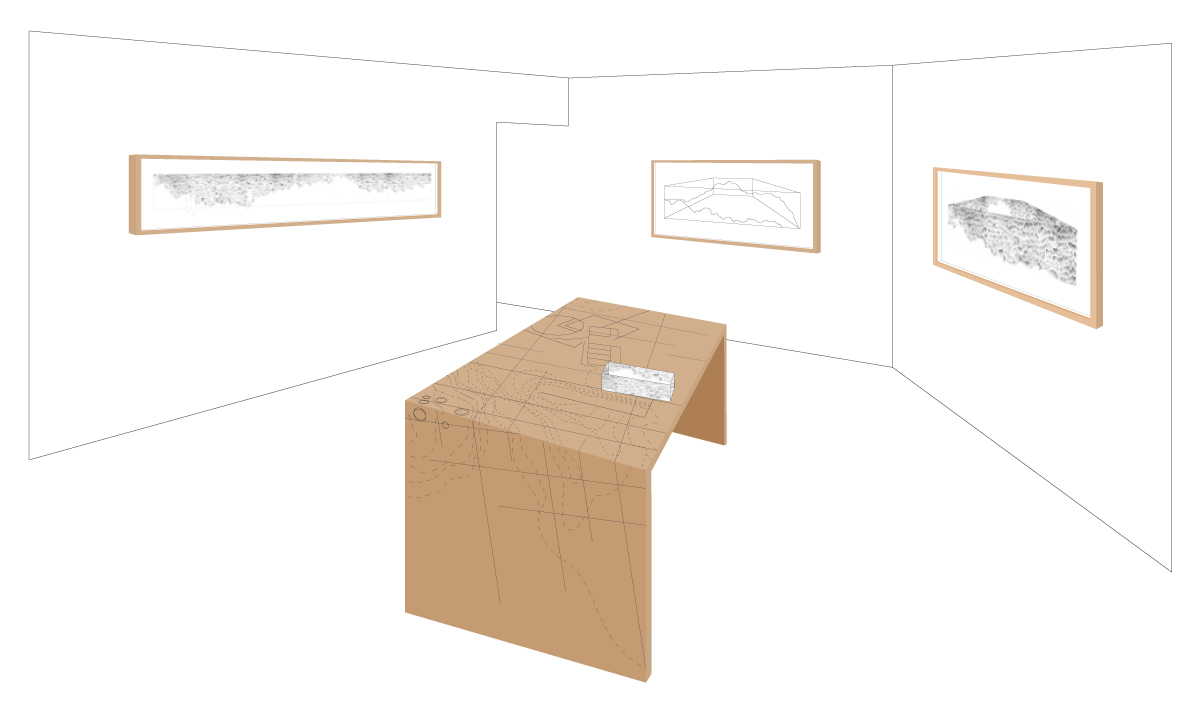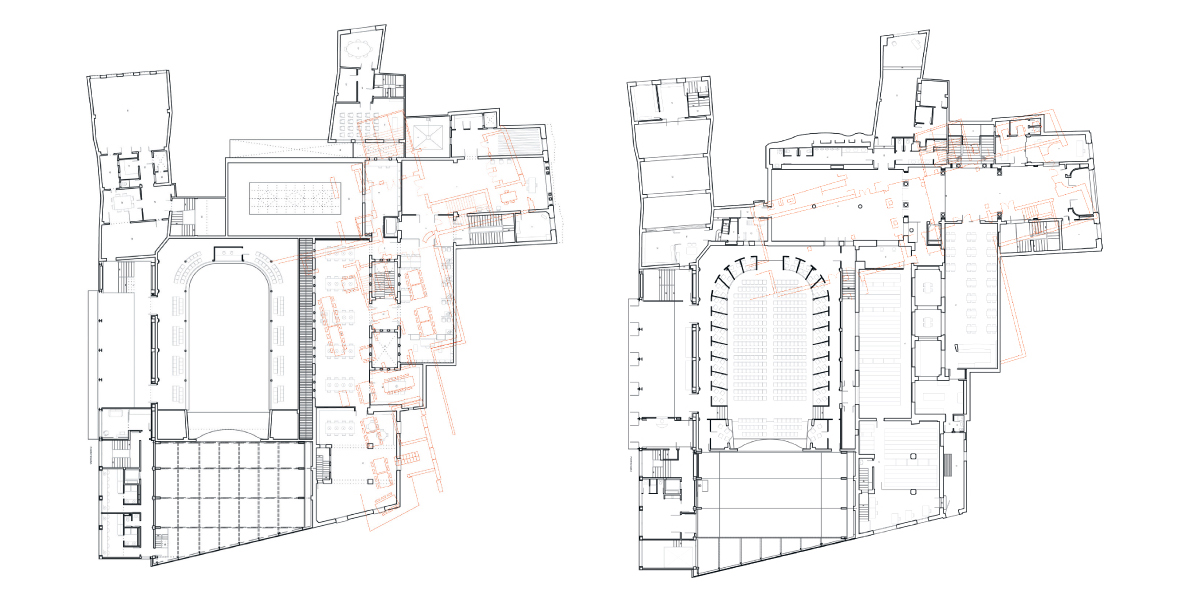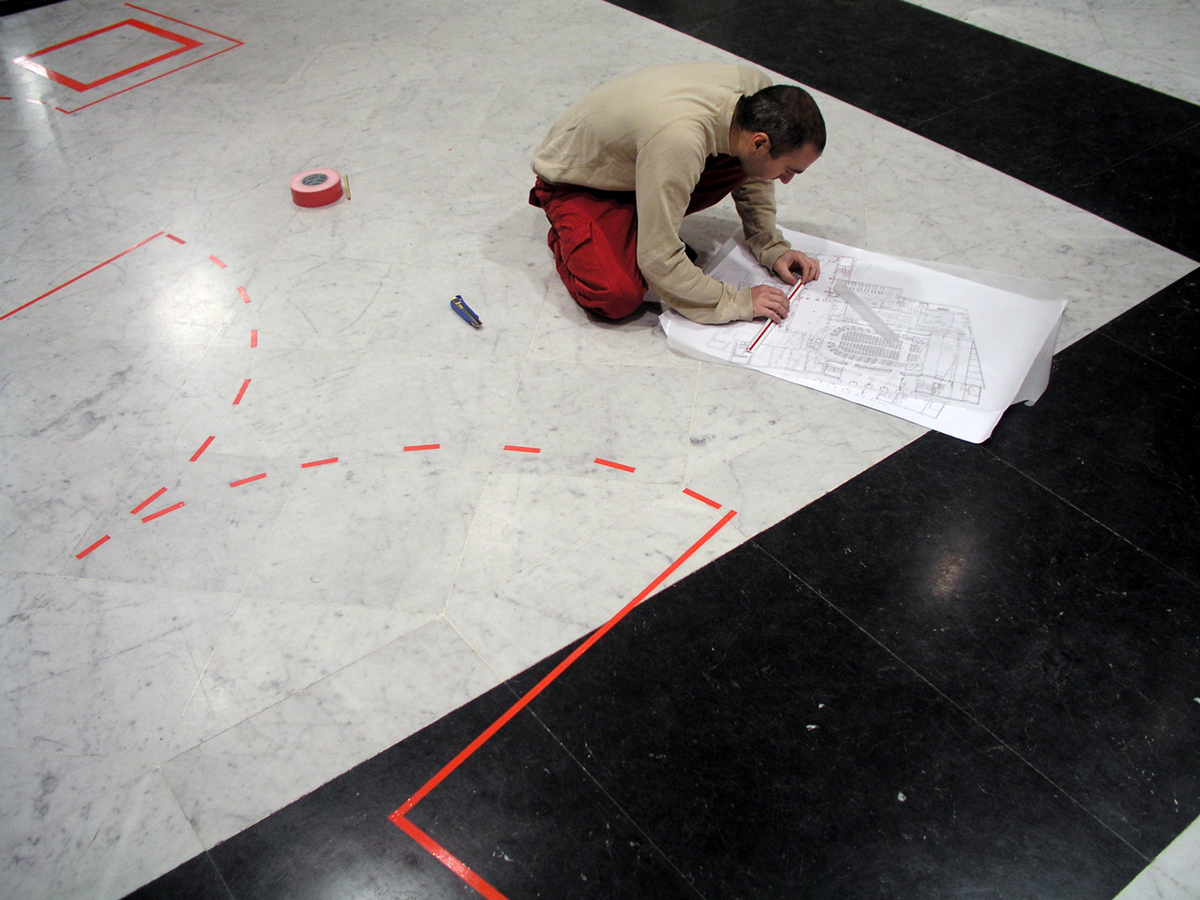
Dibujo para una sala rectangular
Galería Carmen de la Calle. Madrid 2004
descargar pdf
Los proyectos de gran formato requieren unas condiciones específicas para su desarrollo. Por estos motivos una parte de esas ideas las he formalizado a menor escala a través de croquis, dibujos, fotomontajes o maquetas.
Con Dibujo para una sala rectangular mi intención era generar un espacio mental fluido y abierto dentro de otro sólido y acotado. Dicho proyecto se presentó por primera vez en una instalación compuesta por tres dibujos sobre papel y un modelo a escala. Un montaje en el que se entremezclaban dos visiones complementarias de una misma intervención: lo sublime romántico reflejado en los dibujos, y la experiencia cartográfica del territorio que nos revela el mapa/maqueta.
Sobre la mesa dibujada a lápiz directamente en la madera una cuadrícula, una arquitectura y un paisaje recreados; líneas que definen montañas, espacios de una geometría cartesiana y escaleras que no llevan a ninguna parte. Elevándose sobre ese territorio una sala rectangular construida en metacrilato. Cuatro paredes transparentes sobre las que se proyecta uno de mis dibujos de miríadas de rayas, un horizonte que lo envuelve todo.
Drawing for a rectangular room
Carmen de la Calle Gallery. Madrid 2004
download pdf
Large-format projects call for specific conditions to be carried out. For this reason, I have formalized part of these ideas on a smaller scale in sketches, drawings, photomontages and scale models.
My intention with Drawing for a rectangular room was to create a fluid and open mental space within the solid and delimited physical space. The project was presented for the first time in an installation made up of three drawings on paper and one scale model. The installation combined two complementary visions of the same intervention: the romantic sublime reflected in the drawings and the cartographic experience of the territory disclosed by the map-cum-scale model.
A rectangle, an architecture and a recreated landscape are drawn with pencil directly on the wood table; lines depicting mountains, spaces of Cartesian geometry and stairs that go nowhere. On top of this territory, there is a rectangular hall made in perspex. Four transparent walls on which one of my drawings with countless lines is projected, a horizon that envelops everything.
